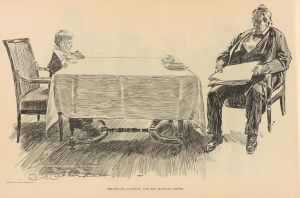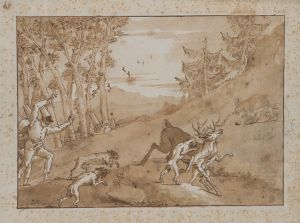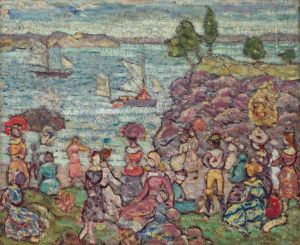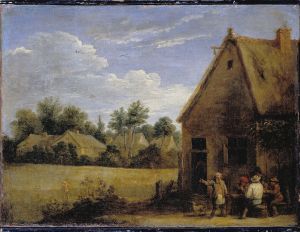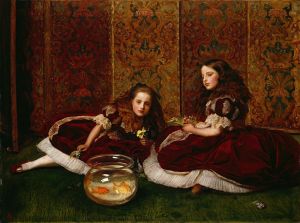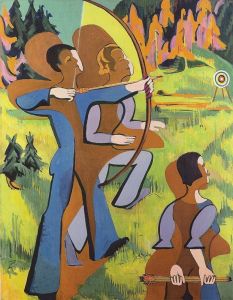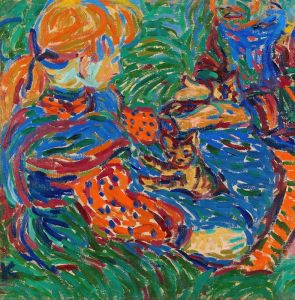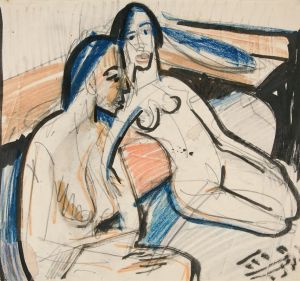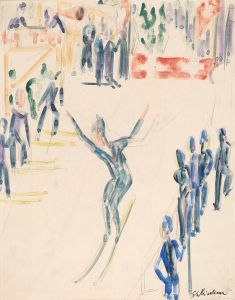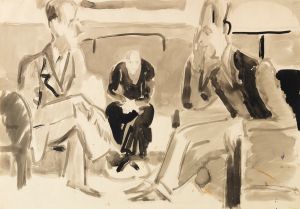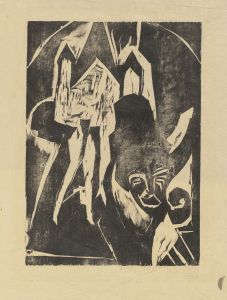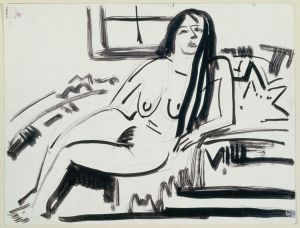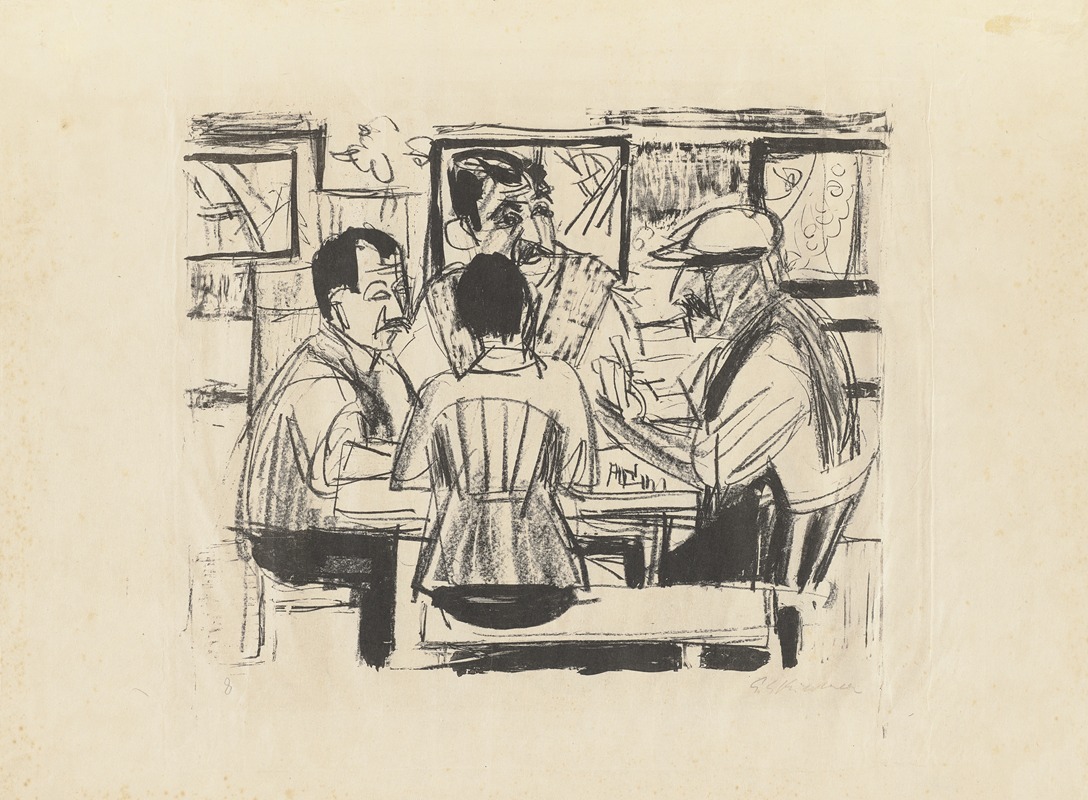
Karten spielende Bauern
A hand-painted replica of Ernst Ludwig Kirchner’s masterpiece Karten spielende Bauern, meticulously crafted by professional artists to capture the true essence of the original. Each piece is created with museum-quality canvas and rare mineral pigments, carefully painted by experienced artists with delicate brushstrokes and rich, layered colors to perfectly recreate the texture of the original artwork. Unlike machine-printed reproductions, this hand-painted version brings the painting to life, infused with the artist’s emotions and skill in every stroke. Whether for personal collection or home decoration, it instantly elevates the artistic atmosphere of any space.
"Karten spielende Bauern" (Peasants Playing Cards) is a painting by the German expressionist artist Ernst Ludwig Kirchner. Created in 1923, this work exemplifies Kirchner's distinctive style, characterized by bold colors, dynamic compositions, and a focus on the human figure. Kirchner was a founding member of the Die Brücke (The Bridge) movement, which sought to create a new form of artistic expression that bridged traditional and modern approaches.
The painting depicts a group of peasants engaged in a card game, a common leisure activity that Kirchner chose to immortalize in his work. The scene is set in a rustic interior, with the figures seated around a table, deeply engrossed in their game. The composition is marked by its vibrant color palette and the use of angular, exaggerated forms, which are hallmarks of Kirchner's expressionist style.
Kirchner's use of color in "Karten spielende Bauern" is particularly striking. He employs a range of bold, contrasting hues to create a sense of energy and movement within the scene. The figures are rendered in a somewhat abstract manner, with elongated limbs and simplified facial features, which adds to the dynamic quality of the painting. The background is equally vivid, with strong, expressive brushstrokes that convey a sense of immediacy and spontaneity.
The subject matter of the painting reflects Kirchner's interest in capturing everyday life and the human condition. By focusing on a simple, yet universally relatable activity like playing cards, Kirchner is able to convey a sense of camaraderie and shared experience among the figures. This theme of communal interaction is a recurring motif in Kirchner's work, as he often sought to depict the social and emotional connections between people.
Ernst Ludwig Kirchner was deeply influenced by the socio-political context of his time. The early 20th century was a period of significant upheaval and change in Germany, and Kirchner's work often reflects the tensions and anxieties of this era. "Karten spielende Bauern" was created during a time when Kirchner was recovering from the psychological trauma he experienced during World War I. This period of his life was marked by a return to more introspective and personal themes, as he sought solace in the simplicity of rural life and the natural world.
Kirchner's artistic career was tragically cut short when he took his own life in 1938, but his legacy as a pioneering figure in the expressionist movement endures. "Karten spielende Bauern" remains an important example of his work, showcasing his ability to blend vibrant color, dynamic composition, and poignant subject matter to create a powerful and evocative piece of art.
Today, "Karten spielende Bauern" is held in high regard and is part of several important collections. It continues to be studied and admired for its artistic innovation and its reflection of the cultural and historical context of early 20th-century Germany. Through this painting, Kirchner's unique vision and his contribution to the development of modern art are vividly preserved.





